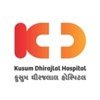ICU Staff Nurse
30+ ICU Staff Nurse Interview Questions and Answers
Asked in Queens NRI Hospital

Q. pH in blood value how many bone what is the sign of drain whooshing care of ventilator patients
The question is unclear and seems to be a jumbled mix of unrelated topics.
The question needs to be clarified and broken down into separate parts.
pH in blood value is a measure of acidity or alkalinity in the blood.
The number of bones in the human body is 206.
The sign of drain whooshing may refer to the sound of air being sucked into a drain.
Care of ventilator patients involves monitoring their breathing and ensuring proper ventilation.

Asked in K D Hospital

Q. How many types of ventilator = 2 types How many types of defebrilator = 3 types
There are 2 types of ventilators and 3 types of defibrillators.
The two types of ventilators are invasive and non-invasive.
The three types of defibrillators are manual, automated external, and implantable cardioverter-defibrillator (ICD).
Ventilators are used to help patients breathe, while defibrillators are used to restore normal heart rhythm.
ICU staff nurses should be trained in the proper use of both ventilators and defibrillators.
ICU Staff Nurse Interview Questions and Answers for Freshers

Asked in Reliance Industries

Q. What are the protocols for COVID-19?
Protocols for COVID-19 include wearing masks, social distancing, hand hygiene, and vaccination.
Wear masks in public settings and around people outside of your household
Maintain at least 6 feet of distance from others
Wash hands frequently with soap and water for at least 20 seconds
Get vaccinated when eligible
Stay home and isolate if you are sick or have been in close contact with someone who has COVID-19
Asked in Bmc Hospital

Q. If a patient in the ICU experiences respiratory arrest, what actions would you take?
Assess airway, breathing, and circulation. Initiate CPR and call for help.
Assess airway, breathing, and circulation
Initiate CPR
Call for help

Asked in Sterlite Technologies

Q. What are the international patient safety goals?
International patient goals in ICU include providing high-quality care, effective communication, cultural sensitivity, and ensuring patient safety.
Providing high-quality medical care tailored to the patient's needs
Ensuring effective communication with the patient and their family, which may involve language interpretation services
Being culturally sensitive and respectful of the patient's beliefs and practices
Ensuring patient safety and preventing complications during their st...read more

Asked in Indian Railways

Q. What are the key considerations in the development of hospitals?
Key considerations in hospital development include patient care, facility design, technology integration, and regulatory compliance.
Patient-Centered Design: Facilities should prioritize patient comfort and accessibility, such as private rooms and family areas.
Technology Integration: Incorporating advanced medical technology, like telemedicine and electronic health records, enhances care delivery.
Regulatory Compliance: Hospitals must adhere to health regulations and standards,...read more
ICU Staff Nurse Jobs




Asked in KIMS Hospital

Q. Describe the intubation process.
Intubation is a medical procedure to secure the airway by inserting a tube into the trachea for ventilation support.
Assess the patient's need for intubation based on clinical signs such as respiratory distress or decreased consciousness.
Gather necessary equipment: endotracheal tube, laryngoscope, suction device, and bag-valve mask.
Position the patient appropriately, usually in a supine position with the head extended to align the airway.
Pre-oxygenate the patient with 100% oxy...read more

Asked in Sterlite Technologies

Q. What do you mean by end-of-life care?
End of life care refers to the support and medical care given to a person who is nearing the end of their life.
End of life care focuses on providing comfort, dignity, and quality of life for the patient.
It involves managing symptoms, pain control, emotional support, and spiritual care.
End of life care also includes discussions about the patient's wishes for their care and decisions about life-sustaining treatments.
Hospice care is a common form of end of life care that provide...read more
Share interview questions and help millions of jobseekers 🌟


Asked in Shalby Hospitals

Q. What are the vital signs of the human body?
Vital signs are essential measurements of the body's basic functions.
Vital signs include temperature, blood pressure, heart rate, and respiratory rate.
They provide important information about a person's overall health and help healthcare providers assess and monitor patients.
Abnormal vital signs can indicate potential health issues or emergencies.
Examples: Normal vital signs for an adult may include a temperature of 98.6°F, blood pressure of 120/80 mmHg, heart rate of 60-100 ...read more

Asked in Healthworld Hospitals

Q. How do you approach treating vulnerable patients?
I believe in treating all patients with equal care and respect, regardless of their socioeconomic status.
I would take the time to listen to their concerns and needs, and provide them with the same level of care as any other patient.
I would also work with social workers and other healthcare professionals to ensure that the patient receives any necessary resources or support.
Examples: providing information on financial assistance programs, connecting them with community resourc...read more

Asked in Amri Hospital

Q. How do you manage hypovolemia?
Hypovolemia is managed by fluid replacement therapy and addressing the underlying cause.
Administer intravenous fluids to restore fluid volume.
Monitor vital signs and urine output to assess response to treatment.
Identify and treat the underlying cause of hypovolemia.
Consider blood transfusion if severe blood loss is the cause.
Provide supportive care such as oxygen therapy and pain management.
Educate the patient on the importance of hydration and prevention of further fluid los...read more
Asked in Parul Sevashram Hospital

Q. What are the emergency drugs, their uses, and their side effects?
Emergency drugs are medications used in critical situations to stabilize patients. They have specific uses and potential side effects.
Common emergency drugs include epinephrine for anaphylaxis, atropine for bradycardia, and naloxone for opioid overdose.
Each emergency drug has a specific indication for use, such as increasing heart rate or reversing the effects of a particular medication.
Side effects of emergency drugs can vary but may include increased heart rate, dry mouth, ...read more


Q. How many ventilator modes are there in total?
There are multiple ventilator modes used in ICU settings to provide different levels of support to patients.
There are commonly used modes like Assist-Control (AC), Synchronized Intermittent Mandatory Ventilation (SIMV), Pressure Support (PS), and Continuous Positive Airway Pressure (CPAP)
Other modes include Volume-Controlled Ventilation (VCV), Pressure-Controlled Ventilation (PCV), and Bi-level Positive Airway Pressure (BiPAP)
Each mode has specific settings and benefits depen...read more

Asked in Paras Hospital

Q. What is cardiopulmonary resuscitation?
Cardiac pulmonary resuscitation is a life-saving emergency procedure performed to manually pump blood and oxygen to the body when the heart and lungs stop functioning.
CPR involves chest compressions to manually pump blood through the body
It also includes rescue breathing to provide oxygen to the lungs
CPR is used in cases of cardiac arrest, drowning, or other emergencies
Proper training in CPR techniques is essential for healthcare professionals

Asked in Park Hospital

Q. What is the difference between ICU and ward patients?
ICU patients require more intensive monitoring and care compared to ward patients.
ICU patients are typically more critically ill and require constant monitoring by specialized medical staff.
ICU patients often have multiple organ failure or are at risk of developing complications.
Ward patients are generally stable and may only require periodic monitoring by nursing staff.
Ward patients are usually recovering from surgery or managing chronic conditions.
ICU patients may require a...read more

Asked in MagicBricks

Q. What is your expected salary?
My expected salary is in line with industry standards and commensurate with my experience and qualifications.
I have researched the average salary range for ICU staff nurses in this area and expect to be within that range.
My salary expectations are based on my years of experience and level of education.
I am open to negotiation and willing to discuss salary and benefits further.
I am more interested in finding a position that aligns with my career goals and values than solely fo...read more

Asked in Dr L H Hiranandani Hospital

Q. What is the normal range for ABG and blood values?
Normal ranges for ABG and blood tests are important for assessing patient health.
Normal ABG ranges: pH 7.35-7.45, PaO2 75-100 mmHg, PaCO2 35-45 mmHg, HCO3 22-26 mEq/L
Normal blood test ranges: WBC 4,500-11,000/mm3, Hgb 12-16 g/dL, Platelets 150,000-400,000/mm3
Abnormal values may indicate respiratory or metabolic disorders, anemia, infection, or other health issues
Asked in NIMS Medical College and Hospital

Q. You performed a cannula insertion and obtained a blood sample. What are your next steps?
Successfully performed cannulation and obtained a blood sample, ensuring patient comfort and sample integrity.
Explained the procedure to the patient to alleviate anxiety.
Used appropriate aseptic technique to prevent infection.
Chose the right vein for cannulation, typically the antecubital fossa.
Inserted the cannula at the correct angle to ensure smooth access.
Collected the blood sample in the correct order of draw to avoid contamination.
Asked in Parul Sevashram Hospital

Q. Gadgets and procedures performed in ICU
Various gadgets and procedures are used in the ICU to monitor and treat critically ill patients.
Ventilators are used to assist with breathing for patients who are unable to do so on their own.
Cardiac monitors track the patient's heart rate and rhythm continuously.
IV pumps deliver medications and fluids directly into the patient's bloodstream.
Suction machines help clear airways and remove secretions.
Central lines are used to monitor blood pressure and administer medications.
EC...read more

Asked in Medanta the Medicity

Q. What is the definition of bradycardia?
Bradycardia is a condition characterized by a slow heart rate, typically less than 60 beats per minute.
Bradycardia is defined as a heart rate less than 60 beats per minute.
It can be caused by various factors such as aging, medication side effects, or heart conditions.
Symptoms of bradycardia may include dizziness, fatigue, and shortness of breath.
Treatment options for bradycardia depend on the underlying cause and may include medication or a pacemaker.
Severe bradycardia can le...read more

Asked in CIPACA

Q. Tell me about ventilation.
Ventilation is the process of moving air in and out of the lungs to facilitate breathing.
Ventilation can be achieved through mechanical ventilation, which involves the use of a machine to assist with breathing.
There are different types of mechanical ventilation, including positive pressure ventilation and negative pressure ventilation.
Positive pressure ventilation involves delivering air into the lungs through a tube inserted into the airway, while negative pressure ventilati...read more

Asked in Sahajanand Laser Technology

Q. What is myocardial infarction?
Myocardial infarction is a medical term for a heart attack, which occurs when blood flow to a part of the heart is blocked, leading to damage or death of heart muscle tissue.
Myocardial infarction is commonly known as a heart attack.
It occurs when there is a blockage in the blood flow to a part of the heart, usually due to a blood clot.
Symptoms of myocardial infarction include chest pain, shortness of breath, nausea, and sweating.
Treatment for myocardial infarction may include...read more

Asked in Medanta the Medicity

Q. What are the steps of hand hygiene?
Hand hygiene steps include washing hands with soap and water or using hand sanitizer.
Wet hands with water
Apply soap and lather well
Scrub hands for at least 20 seconds
Rinse hands thoroughly
Dry hands with a clean towel or air dry
Use hand sanitizer if soap and water are not available

Asked in HCL Healthcare

Q. What is an AED?
AED stands for Automated External Defibrillator, a portable device used to deliver an electric shock to the heart to restore normal rhythm in cases of cardiac arrest.
AED is used in emergency situations to treat sudden cardiac arrest by delivering a shock to the heart.
It is designed to be user-friendly and can be used by non-medical personnel with minimal training.
AEDs analyze the heart rhythm and deliver a shock only if necessary.
They are commonly found in public places such ...read more

Asked in Yashoda Hospitals

Q. What is the compression to ventilation ratio for CPR in one cycle?
The ratio of chest compressions to breaths in CPR is 30:2.
The ratio of chest compressions to breaths in CPR is 30:2.
This means for every 30 chest compressions, 2 breaths are given.
The cycle of CPR typically involves 5 cycles of 30:2 before reassessment.

Asked in Asarfi Hospital

Q. What is a suture?
Sutures are medical devices used to close wounds or surgical incisions, promoting healing and preventing infection.
Sutures can be absorbable (e.g., Vicryl) or non-absorbable (e.g., silk, nylon).
They come in various sizes and types, such as interrupted or continuous sutures.
Sutures are used in various procedures, including skin closure after surgery or injury.
Proper suturing technique is crucial to minimize scarring and promote healing.
Asked in Indus International Hospital

Q. Preparedness for any emergency
ICU staff nurses must be prepared for emergencies through training, protocols, and effective communication to ensure patient safety.
Regular Training: Participate in simulation drills for scenarios like cardiac arrest or respiratory failure to enhance response skills.
Emergency Protocols: Familiarize with hospital protocols for emergencies, such as the Rapid Response Team activation process.
Effective Communication: Use clear and concise communication during emergencies to coord...read more

Asked in Asarfi Hospital

Q. What is a color code?
Color codes are standardized alerts used in healthcare settings to communicate emergencies and specific situations quickly.
Red: Fire or smoke in the facility.
Code Blue: Cardiac arrest or respiratory failure.
Code Yellow: Bomb threat.
Code Orange: Hazardous material spill.
Code Pink: Infant or child abduction.
Asked in MKSM Raj Campus Hospital

Q. How do you care for patients?
Effective patient care in ICU involves monitoring, communication, and personalized treatment to ensure optimal recovery.
Monitor vital signs regularly to detect any changes in the patient's condition.
Administer medications as prescribed, ensuring the correct dosage and timing.
Provide emotional support to patients and their families, helping them cope with stress.
Maintain a sterile environment to prevent infections, especially during procedures.
Collaborate with a multidisciplin...read more

Asked in Medanta the Medicity

Q. Define vital signs.
Vital signs are measurements of the body's basic functions, including temperature, heart rate, blood pressure, and respiratory rate.
Vital signs include temperature, heart rate, blood pressure, and respiratory rate.
They are used to assess a patient's overall health and detect any abnormalities.
Normal ranges for vital signs vary based on age, gender, and medical condition.
Changes in vital signs can indicate illness, injury, or response to treatment.
Monitoring vital signs is cru...read more
Interview Questions of Similar Designations
Interview Experiences of Popular Companies






Calculate your in-hand salary
Confused about how your in-hand salary is calculated? Enter your annual salary (CTC) and get your in-hand salary


Reviews
Interviews
Salaries
Users










